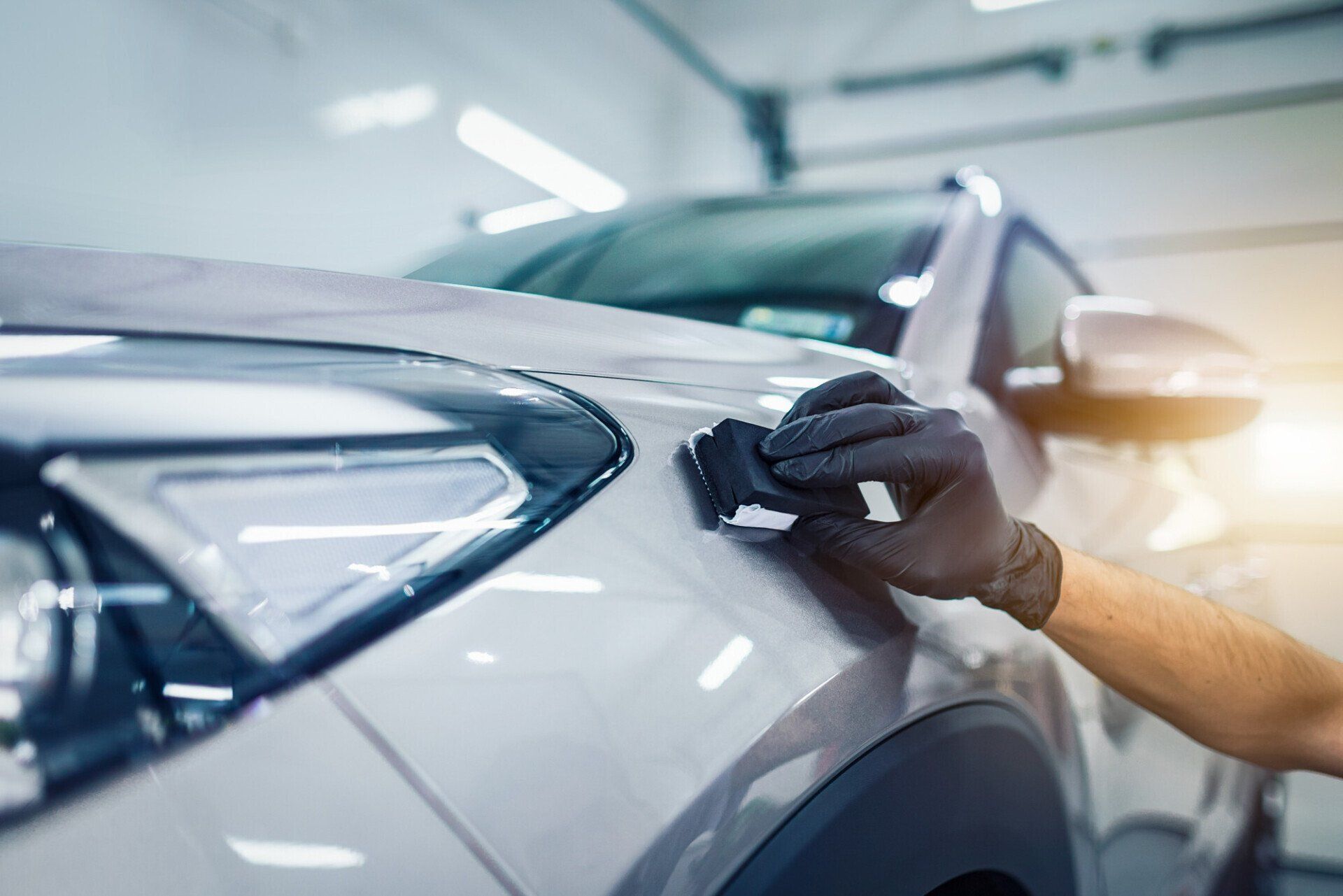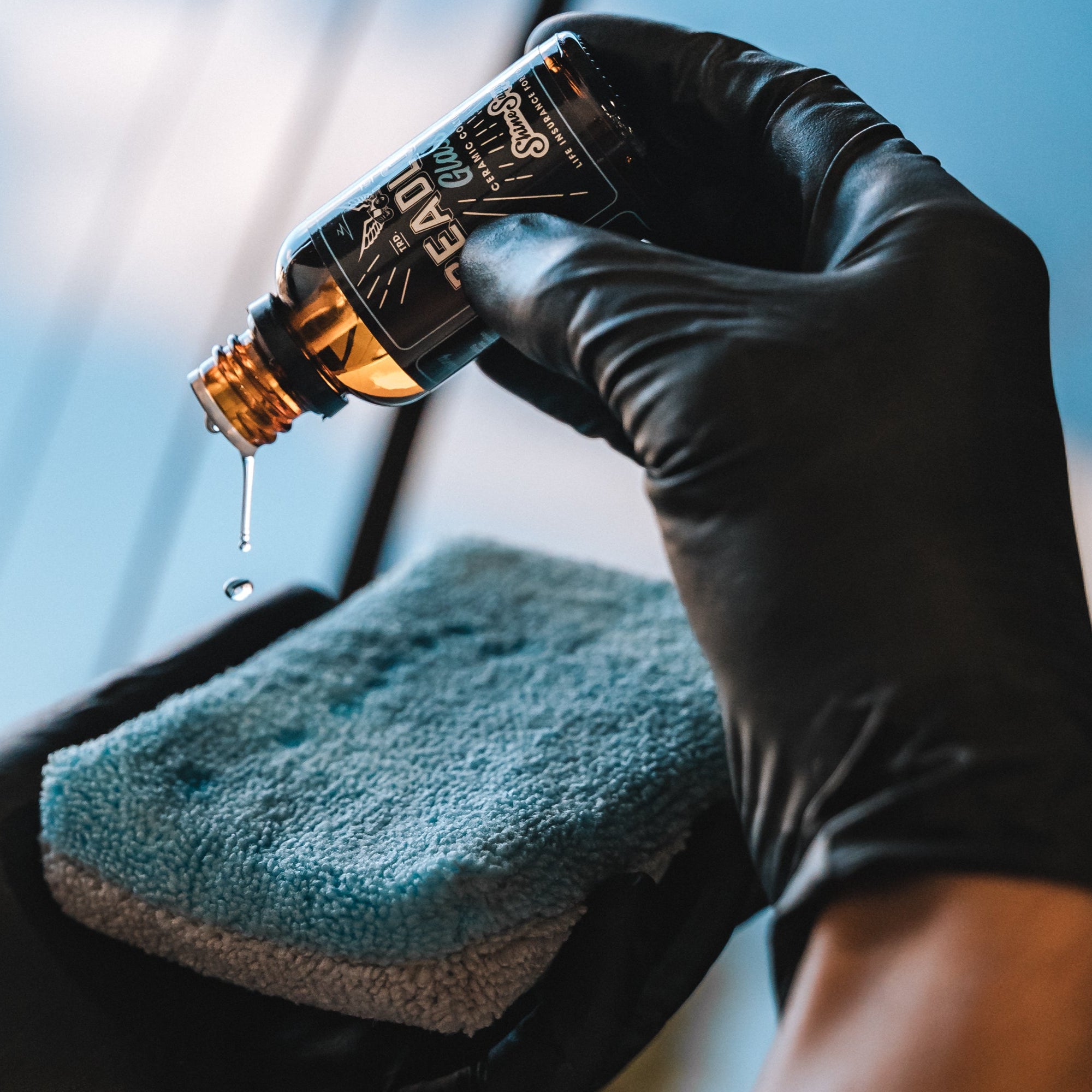The truth about Ceramic Coating Newark’s durability
Wiki Article
Discovering the Science Behind Car Ceramic Coating and Its Protective Qualities
The science of car ceramic coating presents a fascinating research in innovative vehicle protection. Made up primarily of silicon dioxide and polymers, these coverings create a durable bond with automobile paint. This interaction boosts longevity against environmental risks while supplying hydrophobic advantages. Nonetheless, the details of just how these layers job and their long-lasting benefits remain much less comprehended. Unpacking these details reveals why ceramic coverings are ending up being a recommended selection for vehicle careWhat Is Ceramic Coating?
Ceramic coating is a fluid polymer that chemically bonds to the surface of a vehicle's paint. This sophisticated protective layer improves resilience and provides superior resistance to environmental elements. Unlike traditional wax or sealers, which provide momentary protection, ceramic coatings develop a resilient shield that can hold up against severe conditions such as UV rays, acidic contaminants, and extreme climate. When applied properly, the coating develops a hydrophobic surface area, creating water to bead and slide off, which helps in preserving the vehicle's tidiness. In addition, it offers enhanced gloss and depth to the paint, making the lorry show up even more refined and dynamic. The application process usually includes detailed surface area prep work, including cleaning and sprucing up, to guarantee peak bonding. As an outcome, ceramic finishings are coming to be increasingly prominent among car enthusiasts and those looking for to protect their financial investments, guaranteeing to maintain the lorry's aesthetic appeal while reducing the frequency of maintenance.The Composition of Ceramic Coatings
The intricate formula of ceramic coatings mostly includes silicon dioxide (SiO2), which is stemmed from natural resources like quartz and sand. This vital component gives the foundation for the coating's sturdiness and protective qualities. Along with SiO2, ceramic finishes frequently include different polymers and additives that improve adhesion, versatility, and resistance to environmental variables. These compounds function synergistically to develop a robust barrier versus pollutants such as dust, chemicals, and UV rays.Furthermore, some formulas include titanium dioxide (TiO2) or various other nanomaterials, which can boost the coating's hydrophobic residential properties, causing better water repellency. The exact structure can vary greatly amongst makers, affecting efficiency and long life. Eventually, the mix of these elements culminates in a safety layer that not only boosts the visual charm of automobiles yet likewise offers to lengthen their lifespan by shielding the surface area from potential damage.How Ceramic Coatings Work
Recognizing just how ceramic layers function includes exploring their chemical make-up, which adds to their protective high qualities. The application process is vital for attaining perfect results, while longevity and resilience variables figure out the coating's performance over time. Together, these elements highlight the advantages and efficiency of ceramic coatings for lorry defense.Chemical Structure Explained
While numerous car owners look for lasting defense for their vehicles, the chemical structure of ceramic finishings plays a crucial duty in their efficiency. These layers primarily are composed of silicon dioxide (SiO2), which is obtained from all-natural minerals. This compound forms a solid bond with the car's paint, creating a long lasting, protective layer. Additionally, numerous ceramic finishes include titanium dioxide (TiO2), enhancing their hydrophobic properties and resistance to UV rays. The visibility of polysiloxanes can additionally boost flexibility and durability. With each other, these components contribute to the coating's capacity to fend off water, dirt, and pollutants, while also providing a high-gloss coating. Understanding this chemical structure assists car owners appreciate the robust security offered by ceramic coverings.Application Refine Review
Using ceramic finishings entails a meticulous process that ensures ideal bonding and security for the vehicle's surface. Thorough cleaning and decontamination of the car's outside are executed to get rid of dust, crud, and previous waxes. This step confirms that the surface is without pollutants that can prevent bond. Following this, the paint is typically brightened to boost clearness and eliminate any type of blemishes. Once prepared, the ceramic coating is applied in little sections using an applicator pad, permitting for consistent insurance coverage. The coating is after that delegated treat, developing a strong chemical bond with the surface. Correct treating times and problems are important, as they confirm the coating achieves its maximum effectiveness and safety qualities.Long Life and Sturdiness Aspects
Ceramic finishings are designed to supply resilient defense with their innovative chemical structure, which creates a durable obstacle versus environmental impurities. The resilience of these finishings is influenced by variables such as the density of the application, the high quality of the item, and the problems under which the lorry is exposed. Top notch ceramic finishes can last several years, withstanding scrapes, UV rays, and chemical stains. Appropriate maintenance, including routine washing and regular reapplication, can further boost longevity. In addition, environmental elements like environment and direct exposure to toxins can affect the lifespan of the coating. Generally, when applied and preserved appropriately, ceramic finishes provide outstanding longevity, making them a prominent option for car enthusiasts seeking to protect their vehicle's look.Hydrophobic Residences and Water Repellency
Hydrophobic residential properties are a characteristic of top quality car ceramic coatings, significantly boosting the car's surface area performance. These coatings create a molecular bond with the car's paint, resulting in a surface area that pushes back water properly. When water enters call with a ceramic-coated surface area, it beads up and rolls off, reducing the amount of liquid that remains on the paint. This behavior not only adds to an aesthetically pleasing appearance but also minimizes the accumulation of contaminants such as dirt, crud, and road salts.The boosted water repellency brings about much easier cleansing and upkeep, as less initiative is called for to get rid of unwanted compounds. In addition, the hydrophobic nature of ceramic layers helps in avoiding water places, which can mar the finish of uncoated surface areas. Overall, the incorporation of hydrophobic residential properties in ceramic finishings plays a necessary duty in maintaining the lorry's immaculate appearance while simplifying maintenance.Defense Against Scratches and UV Damage
Car ceramic coatings offer substantial protection versus scrapes and UV damages. The scratch resistance system produces a durable layer that soaks up effects, while the UV protecting advantages help maintain the lorry's paint honesty gradually. With each other, these features add to a longer-lasting and visually enticing coating.Scratch Resistance Mechanism
Using innovative innovation, ceramic coatings give a durable shield versus scratches and UV damage, boosting the durability and appearance of car surfaces. The scrape resistance system of these finishings is credited to their unique molecular framework, which develops a long lasting bond with the car's paint. This bond develops a hard, protective layer that can absorb effects and withstand abrasions. Furthermore, the smooth surface of the coating lowers rubbing, making it challenging for contaminants to adhere and cause scrapes. The chemical make-up of ceramic coatings commonly includes nanoparticles that enhance the safety layer, further enhancing its strength. Automobiles treated with ceramic layers show substantially boosted scrape resistance compared to traditional wax or sealants, ensuring a beautiful finish over time.UV Protecting Conveniences
The protective top qualities of ceramic finishes expand beyond scrape resistance to consist of substantial UV shielding benefits. These layers develop a robust obstacle that reflects dangerous ultraviolet rays, safeguarding the vehicle's paint and here underlying products. Extended exposure to UV radiation can result in fading, oxidation, and deterioration of the paint surface. By incorporating ceramic right here coatings, vehicle proprietors can efficiently reduce these threats, preserving the visual appeal and integrity of their cars. Furthermore, the UV blocking residential or commercial properties add to improved long life, lowering the frequency of repainting and upkeep. Ultimately, the integration of ceramic coverings supplies a complete solution for protecting vehicles from the damaging impacts of sun direct exposure, making certain a sustained, vivid appearance gradually.The Longevity and Upkeep of Ceramic Coatings

Regularly Asked Inquiries
Can Ceramic Coating Be Applied to Any Kind Of Kind of Lorry?
Ceramic coating can be related to various sorts of vehicles, consisting of cars, vehicles, and bikes. Nonetheless, surface area prep work and compatibility with details products are vital for perfect bond and performance of the coating.Just How Much Does Ceramic Coating Typically Expense?
Ceramic coating generally sets you back between $500 and $2,000, depending upon variables such as lorry dimension, coating high quality, and expert application. The investment can offer lasting defense and boost the automobile's appearance over time.
Is Expert Application Essential for Ideal Outcomes?
The necessity of specialist application often relies on preferred outcomes. Experts usually ensure correct surface area prep work and application techniques, causing optimal bonding and durability of the coating, which might be challenging for unskilled people to accomplish.Can Ceramic Coatings Be Removed or Fixed?
Ceramic finishes can be eliminated link or repaired, though the process might require particular solvents or techniques - Ceramic Coating Newark. Proper removal is necessary to prevent damage to the underlying surface area, highlighting the value of professional support for ideal outcomesExactly How Does Ceramic Coating Compare to Conventional Wax?
The comparison in between ceramic coating and traditional wax reveals that ceramic coverings use remarkable toughness, enhanced security against environmental impurities, and longer-lasting sparkle, while wax needs a lot more regular application and supplies much less general resistance to damage.Report this wiki page